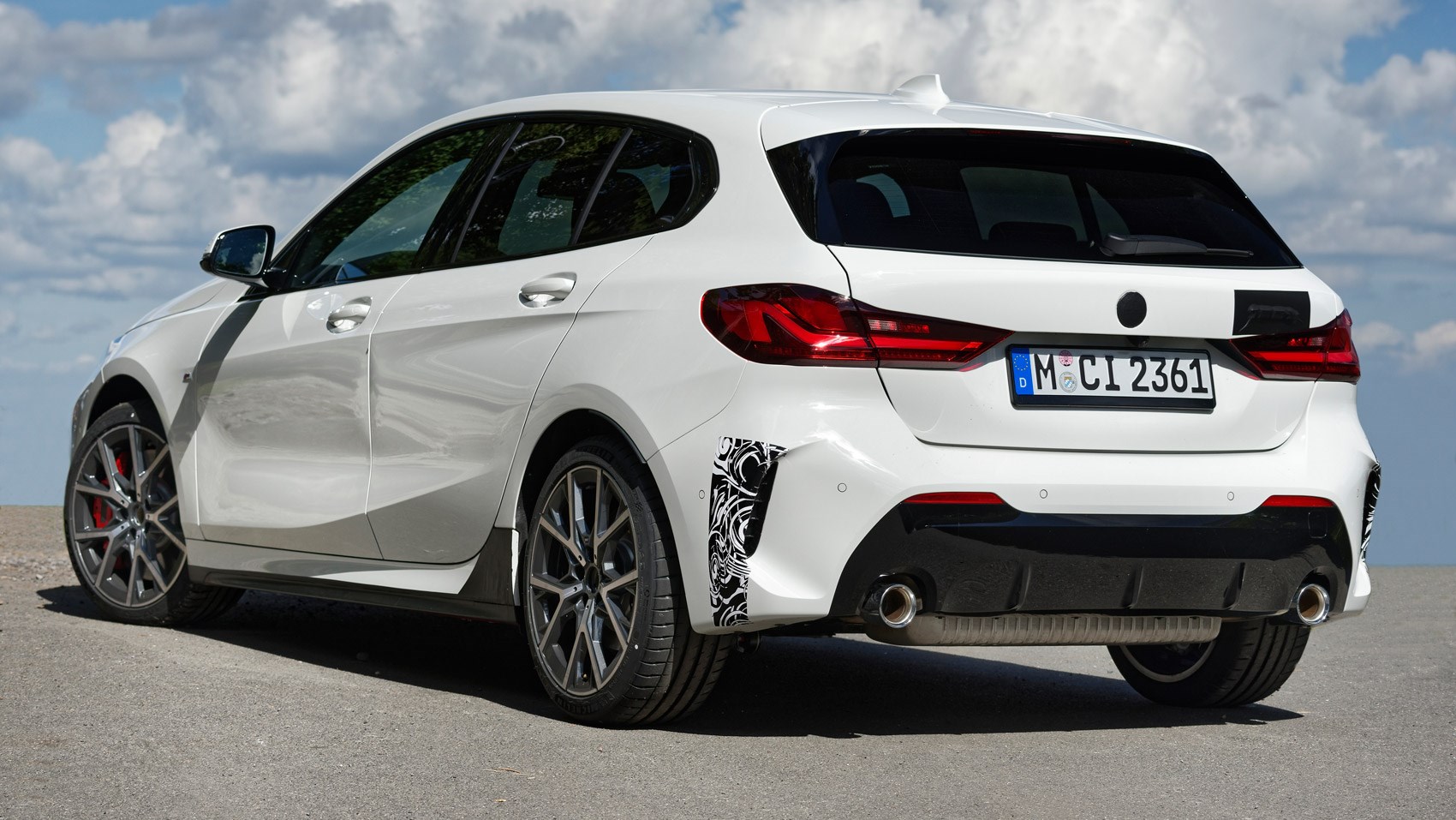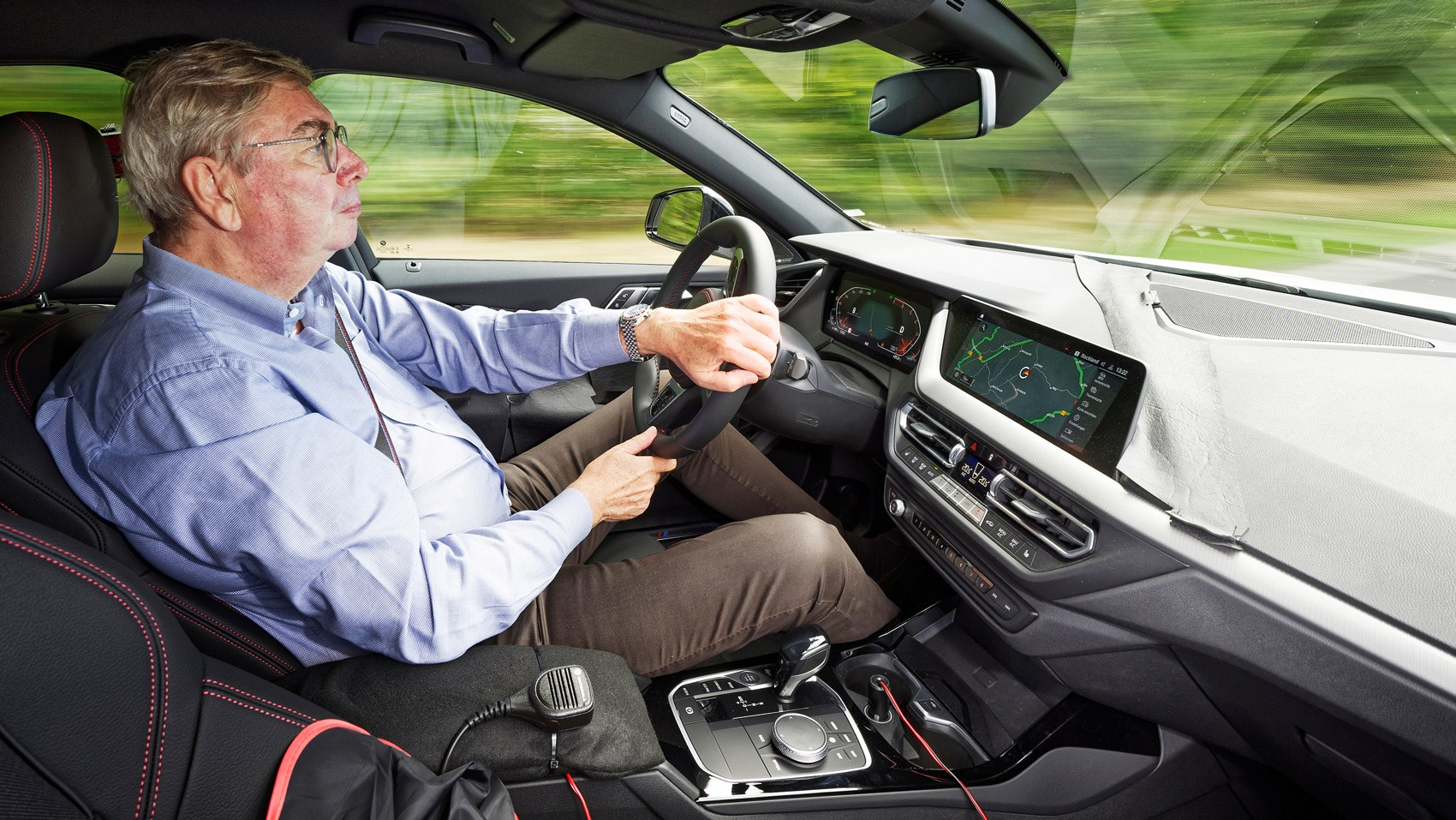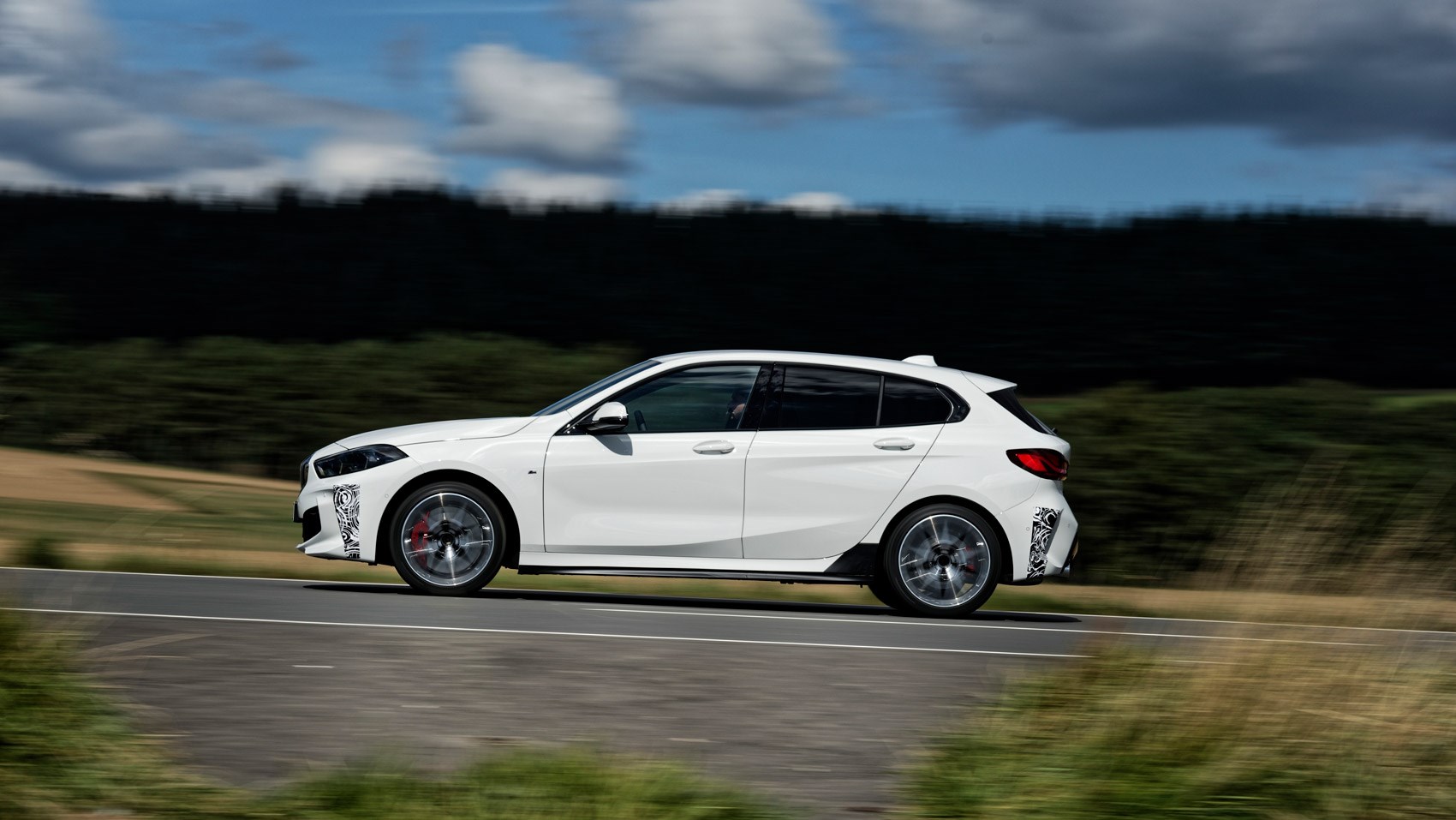► Front-drive 1-series hot hatch
► Has BMW created a Golf GTI killer?
► Our first impressions are below…
When the new 1-series was launched in 2019, it scored big fat credits for its ride, handling and roadholding talents. Steering fight – a typical vice of potent front-wheel drive cars – had been virtually eliminated, cornering grip was strong and neutral all the way to the limit of adhesion, and even without highlights like the coveted six-cylinder engine and rear-wheel drive, it was obviously another BMW done right.
But this perception changed in the wake of the M135i and M235 Gran Coupé driving experience. Enter the 128ti which is allegedly made of sterner stuff. To put it to the test, we spent a couple of ten-tenths days on the roads around the ‘Ring and on the Nordschleife.
Give me some spec details first…
Think of it as BMW’s Golf GTI rival – pretty much everyone is already. The 2.0-litre four-cylinder turbo delivers 261bhp between 4750 and 6500rpm and 295lb ft between 1750 and 4500rpm. Torque is relayed by the ubiquitous eight-speed ZF automatic which is smooth but not quite quick and physical enough in Sport. The 128ti accelerates in 6.2sec from 0-62mph; it tops an indicated 161mph.

Thanks to the omission of all-wheel drive, the kerb weight is down by 80 to 1520kilos. Although official fuel figures are not yet available, pulling out all the stops resulted in the test car´s average consumption of, gulp, 20.8mpg. The price? About 7K pounds less than the 302bhp M135i. Customers can choose from five paint jobs, two trim levels and three contrasting colour schemes. By the way: the tacky ‘ti’ stickers are a delete option.
Any other performance changes?
The ten-mile stretch between the BMW garage in downtown Nürburg and the beginning of the road loop was all it took to register the key dynamic differences between the 128ti and the M135i xDrive. The ti has a much better steering and a better front suspension which are key to the more inspiring yet absolutely homogenous handling qualities. Better steering? Changing the ratio by one point was only the beginning.

Complementary measures included recalibrated rubber mounts, revised kinematics, stiffer longitudinal and lateral bushings, a limited-slip differential, pre-loaded anti-roll bars, a 10mm lower ride height and the so-called boomerang link which reinforces the entire front axle assembly. Better suspension? Sweating the details was of the essence here. The latest Michelin Pilot 4S tyres (size 225/40 R18 all-round) outqualified Bridgestone and Michelin as perfectly ground-hugging contact patches, tennis-ball size vibration neutralizers attached where the rear control arms meet the shock absorber mounts effectively neutralized g-force-induced irritations, the fixed-rate dampers are firm when the rider swings the whip and compliant when the pressure is off.
How does this all feel?
The 128ti is neither a decontented M135i, nor a go-faster 120i. It is, first and foremost, a bespoke pure-bred ti with a strong character of its own. Not surprisingly, the tuning community can’t wait to get their hands on this go-faster BMW which performs in a swift yet relaxed manner. Even when the lunatic inside takes over, it never feels loose or vague, let alone insecure. Involving and by nature eager to play, dancing on razor´s edges is nonetheless a rarity which needs to be willingly induced.
Unlike the bumble bee busy M135i, the 128ti emphasizes reassuring 24/7 controllability, failsafe stability at speed and jovial-to-intense man-machine connectivity. How did the chassis wizards achieve this transformation? By enhancing yaw which duly inspires the rear axle to display subtle yet entertaining lift-off antics. By spot-on torque steer compensation via a fast-acting wheel slip limiter. And by means of a speedier turn-in motion encouraged by said Torsen diff which interacts without interfering.

Keeping up with an M2 driven by the chief chassis wizard Jos van As through the Eifel mountains is a fruitless endeavour. Even trying not to lose touch requires radar eyes, a clean conscience and a somewhat different attack line. Instead of simply connecting one apex to the next, the 128ti prefers a slightly softer trajectory with an earlier brake point, later turn-in and full power-back-on about one third through the corner. The new steering may initially feel a tad less direct, but it is meatier, at peace with itself and three-dimensional without the faintest trace of woolliness or indifference. The Eco Pro button is little more than a token gesture, Comfort is aptly labelled, and Sport is evidently more dynamic still even though it won’t light the candle at both ends.
At the end of the day, when the tyres are sticky hot and past their prime, it helps to nurse the fronts by fractionally widening the turn-in arc and taking off lock early. The more powerful standard sport brakes are perfectly reliable partners in crime, combining reassuring initial bite with progressive deceleration and adequate pedal effort. Make no mistake: the reimagined ti is not a hyper high-tech ticker of all boxes but a no-frills design with zero excess complexity and few – if any – marketing-driven trickeries. Can´t wait to see what happens should BMW decide to resurrect the even sharper tii.
BMW 128ti: first impressions
They fixed it. It still looks frumpy, and it could to with a little more power, but BMW’s front-drive hot hatch drives the way it should have from the start, with the changes introduced for the 128ti are confirmed to filter through to the rest of the range. The Golf GTI should be worried.